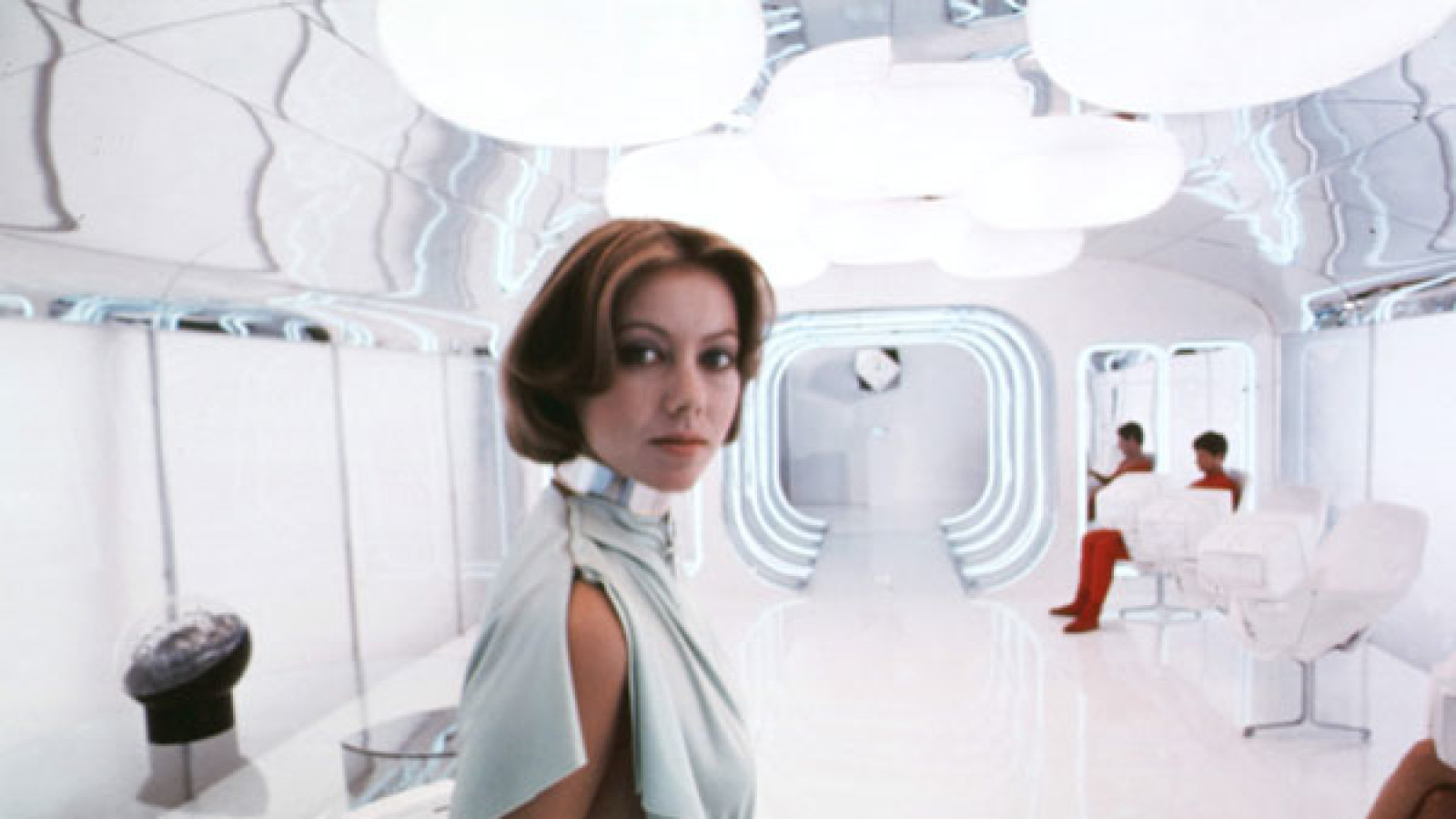
The term dystopia basically means the opposite of utopia. A utopia is deemed to be a perfect society, one with perfect or near perfect qualities. Some scholars have associated it with democracy and egalitarianism, with principles that promote equality and fairness within the society.
The word and concept was first used in Sir Thomas More’s 1516 book titled Utopia. Dystopia is the polar opposite, a society that is frightening and unjust. It is often associated with controlling governments, the dehumanization of its citizens, radical environmental changes, and other issues that may be associated with a society that is spiraling out of control.
While it can cross all genres and subgenres, a dystopian film tends to fall into the science fiction category and often takes place sometime in the future. One of the earliest that falls within the subgenre is the German expressionist masterpiece Metropolis (1927).
Since then, there has been at least one movie from every decade that has addressed this theme and the potential political, societal, and environmental issues that have been of public concern.
With the greater special effects capabilities and the popularity of science fiction, the subgenre has produced a vast number of pictures since the 1980’s including popular ones such as They Live, 12 Monkeys, Battle Royale, Blade Runner, Brazil, and Escape From New York.
This list contains a little bit of everything and at least one from America, Italy, France, and Australia. It is a varied collection of cult films and trashy pictures; all ranging between being critically hailed, being exploitative and controversial, and being considered so bad that they are great.
[Author’s Note: This list is not meant to be an all inclusive list or a best of list; it is simply twenty cult movies that may be worth your time.]
1. 1984 (1956)
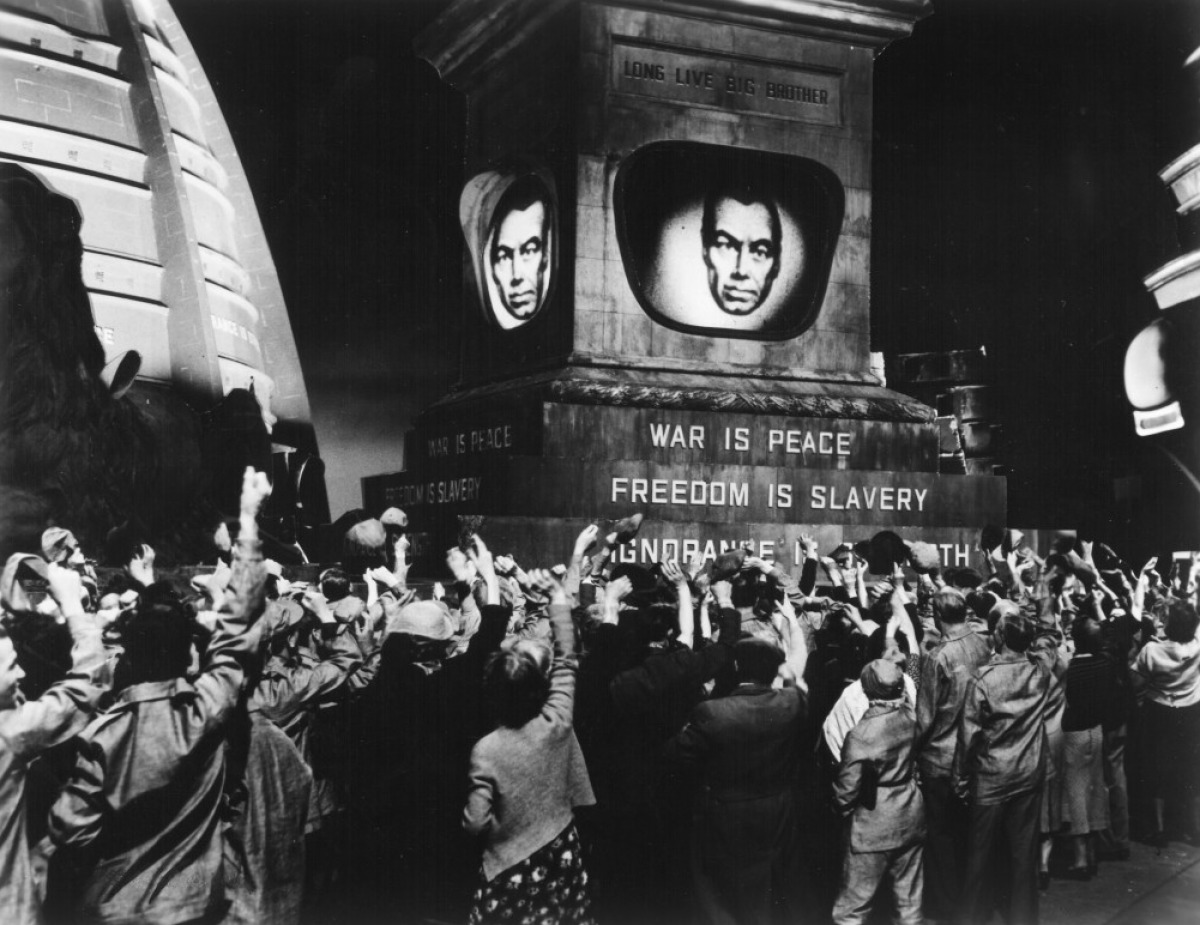
“Will Ecstasy Be a Crime …In the Terrifying World of the Future?” [1]. This future dystopian setting has the world divided into new countries, where one is run like a fascist police state. The citizens are closely monitored and not allowed to keep diaries or fall in love. When Winston Smith breaks the law and falls in love, he is tortured and brainwashed for his crime.
Loosely adapted from George Orwell’s novel Nineteen Eighty-Four (1949), which has also been released for radio, a 1954 television version, a 1984 American film, and several other versions.
It stars Edmund O’Brien, who had a long and successful career and won one Academy award for Best Supporting Actor in The Barefoot Contessa. Donald Pleasance also appears and really stands out in his performance, he showed very early in career his ability to play unique characters.
2. The Time Machine (1960)
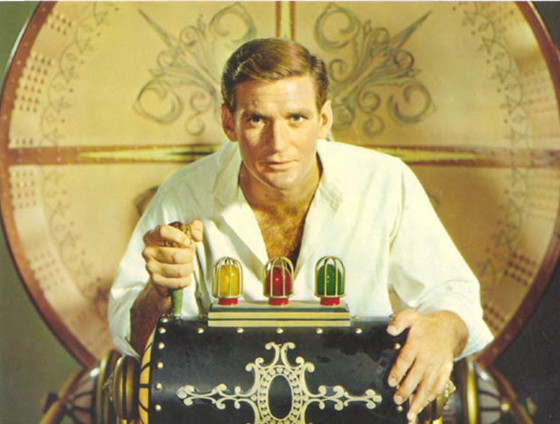
“The Time Machine whirls you to a world of amazing adventure in the year 800,000!” [2]. Four friends are supposed to have dinner with their friend and inventor H. George Wells (Rod Taylor) on January 5, 1900.
He is late for the dinner and rushes in late, looking distraught and exhausted. He tells them that he has created a time machine that can travel through the fourth dimension and has traveled to different points in time. He travels to 1917, 1940, and 1966 to see what the future holds.
In 1966, nuclear explosions take place that cause volcanic eruptions and trap the time machine into a mountain. Wells is forced to travel to the year 802,701, where the mountain has finally disappeared. He comes to discover two races living in this time, a vegetarian people and a cannibalistic race called the Morlocks that use them to feed on.
The inventiveness of the special effects led to this film winning the Academy Award for best special effects in 1961. The time travel device is slightly different than in the novel, looking more like a sleigh than a box described in the book [3].
It was built around “a 1901 Eugene Berninghaus antique barber chair…with a tall, concave disc vertically mounted at the back of the machine which spins as it travels through time. The most commented-on feature of the machine is a brass plate…[that reads] “manufactured by H. George Wells,” a not-very-in-joke that may also have intended to suggest the Time Traveler is H.G. Wells” [3].
The actual aspect of traveling through time was essentially done using a combination of time-lapse photography and stop-motion animation [3]. Another device that they used was the manipulation of lights, using different filters to show different times of the day [3]. There were also a lot of matte paintings used, which “to contemporary eyes…may seem obvious, [but] in 1960 they were convincing enough to allow a willing suspension of disbelief” [3].
There is a very large cult fan base for this film, very similar to Star Trek, Planet of the Apes, and Star Wars. An episode of the TV series The Big Bang Theory is devoted to it, when the group of four friends buys the actual time machine prop used in the film.
3. The 10th Victim (1965)
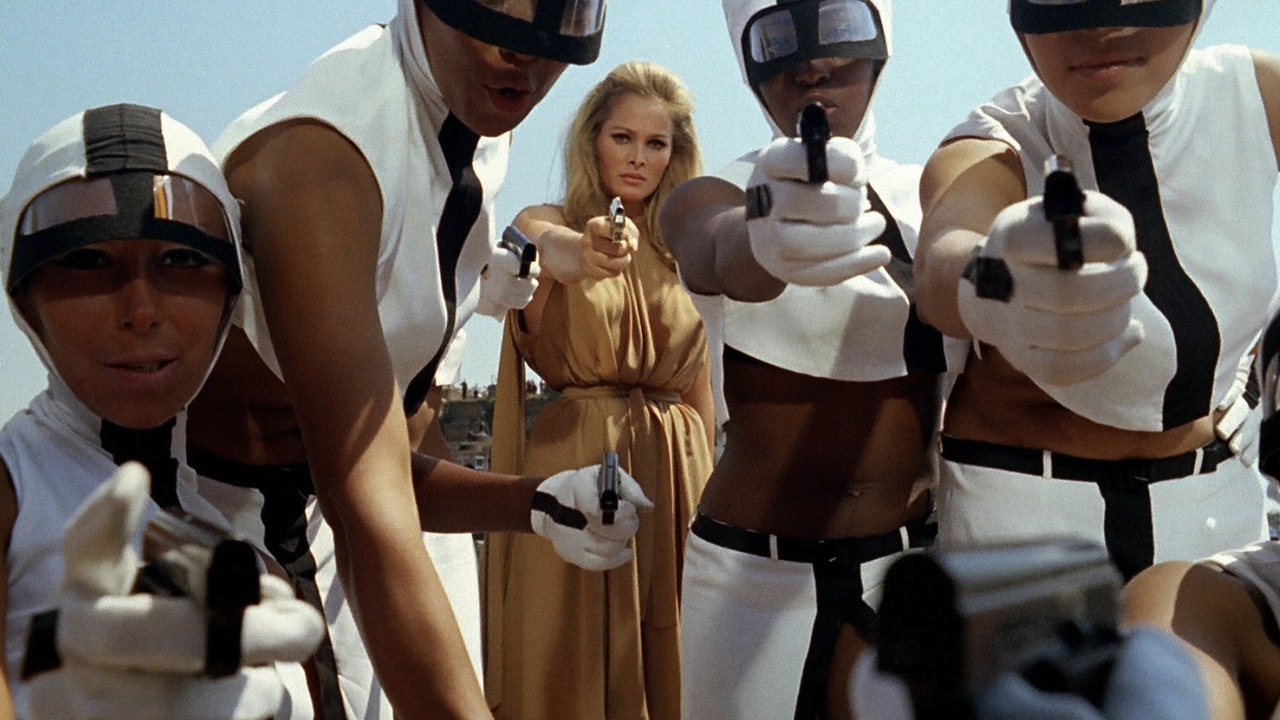
“It’s the 21st century and they have a license to kill” [4]. This is a campy Italian sci-fi film that can be viewed as a predecessor for movies like Battle Royale and the Hunger Games trilogy, as well as the whole reality television genre.
Set in a futuristic society, war and the population are controlled by a regulated sport of killing. Each competitor must play in ten rounds, five as the hunter and five as the victim. The winners of each kill get rewards, with the ultimate prize of one million dollars for the one surviving all ten rounds.
The winners are interviewed like athletes and asked about weird questions like what their favorite comic books are. Caroline Meredith (Ursula Andress) is looking to score even more money, by getting her tenth kill on camera through a sponsorship deal with the Ming Tea Company. Problems arise when she becomes romantically involved with her victim (Marcello Mastroianni).
This is a wild and stylishly pop art style of film, everything in it just seems to ooze out the essence of being cool including the jazz score by Piero Piccioni. Andress is as hot as ever, including a very memorable scene where she kills someone with a gun built into a bra. Make sure that you live dangerously, but within the law in this society as they do give out parking violations.
4. Barbarella (1968)
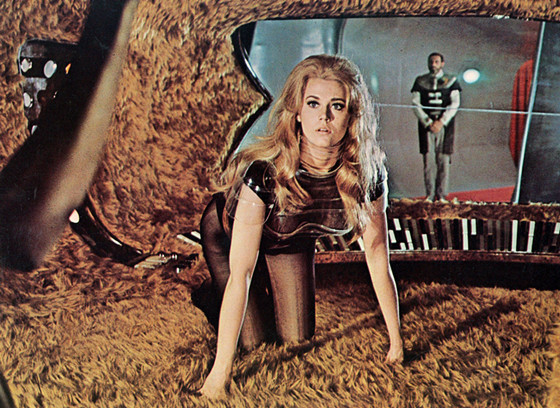
“The space age adventuress whose sex-ploits are among the most bizarre ever seen” [5]. Based upon a French comic, this is the ultimate in sexual science fiction.
Set in the 41st century, Barbarella (Jane Fonda) is sent by the President of Earth to rescue Doctor Durand Durand and retrieve his Positronic Ray. She travels to the planet of Lythion, where a new sin is invented every hour.
In order to achieve her mission, she must subject herself to the sexual horrors of a neurotic city. This includes a sex organ keyboard, a fantasy dream chamber, a lesbian queen, a giant hookah that dispenses the essence of a man, creepy children of the corn kids with biting dolls, leather robots, a blind bird man, a clumsy revolutionary, and a living labyrinth; all of this while appearing in eight different scantily clad outfits.
The film is a unique mix of sex, comedy, cheesiness, “pop-art psychedelics, free-love promiscuity and free-for-all politics” [6]. If you don’t take it too serious and just enjoy the ride, this is a hilarious sexy version of Flash Gordon. The sets design and outfits are creative and colorful, a combination of campy and kitsch. They are reminiscent of the low budget sci-fi space films from the 1950’s and early 1960’s.
Jane Fonda does a good job in her performance, even though a large portion of it is looking sexy. Despite the large amount of sex involved, Barbarella is an empowered female. She is never forced into anything; she does it all out of her own free will. This film would go on to inspire the X rated sex comedy Flesh Gordon (1974). It is also a predecessor to Demolition Man, with a future where natural sex has been eliminated.
5. THX 1138 (1971)
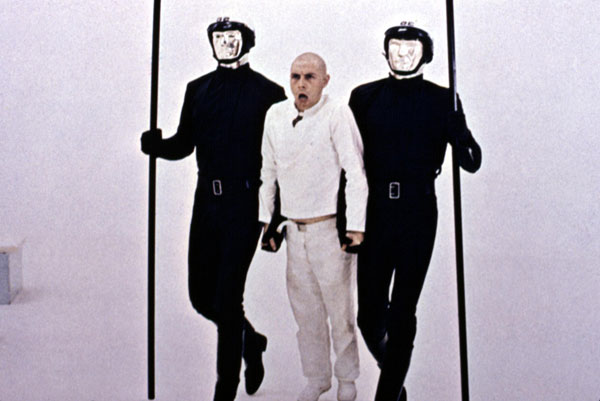
“Visit the future where love is the ultimate crime” [7]. Set sometime in the future in an underground dystopian society, the population is strictly controlled; sexual intercourse is not permitted, they are required to take drugs in order to regulate emotions and improve job productivity, they all wear identical white clothing and have shaved heads, they are monitored by android police, and worship a god that produces the same prompted responses during confessionals.
THX 1138 (Robert Duvall) and LUH 3417 (Maggie McOmie) stop taking their drugs and develop a sexual relationship, which leads to the trial and imprisonment of THX 1138. He is imprisoned with SEN 5241 (Donald Pleasance) and they seek to escape along with SRT 5752.
This was the first film directed by George Lucas and it was based on a short film that he made while attending the University of Southern California. You could tell the potential that he had for world building and the direction is outstanding, with this being a far superior film to Star Wars depending on your personal opinion.
The film features gorgeous set designs and stark colors of the mostly all white buildings and uniforms, versus the black uniforms and silver heads of the android police officers. The performances by Duvall, McOmie, and Pleasance are all very good, with Pleasance particularly standing out as a strange and slightly unhinged character.
There are some excellent shots in the film; mostly involving close ups of Duvall and McOmie’s characters. There is also a very great overhead scene of Duvall in an all white location, surrounded by several black police with long poles electrocuting him.
There are several versions of this floating around, as Lucas re-released this in 2004 with new footage and additional digital effects added.
6. Soylent Green (1973)
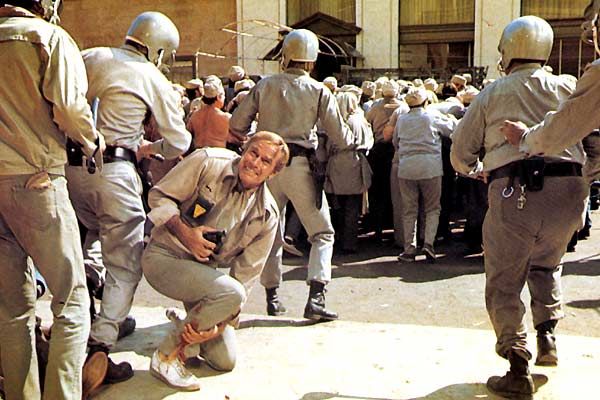
“What is the secret of Soylent Green?” [8]. Set in 2022, the world has gone through a severe pollution problem and overpopulation that has exhausted virtually all of the natural resources.
A company named Soylent Industries manufactures the main source of food, made out of plankton from the oceans. When a member of the board of Soylent Industries is murdered, detective Thorn (Charlton Heston) investigates and it takes him down a path of discovering the true ingredients of Soylent Green.
A mix of science fiction and police procedural picture, this dystopian set story is loosely based upon the 1966 novel Make Room! Make Room! by Harry Harrison. Heston once again stars in another dystopian style picture, also appearing in Planet of the Apes and Omega Man. There are appearances from Edward G. Robinson (Little Caesar), Chuck Connors (The Rifleman), and Dick Van Patten (Eight is Enough).
It contains several really memorable scenes, one involving a riot where large trucks scoop up the rioters and dump them into the back of the trucks. Heston is great as always and Robinson has an ominous death scene in his final on screen performance, he would die from bladder cancer twelve days after the film wrapped up production.